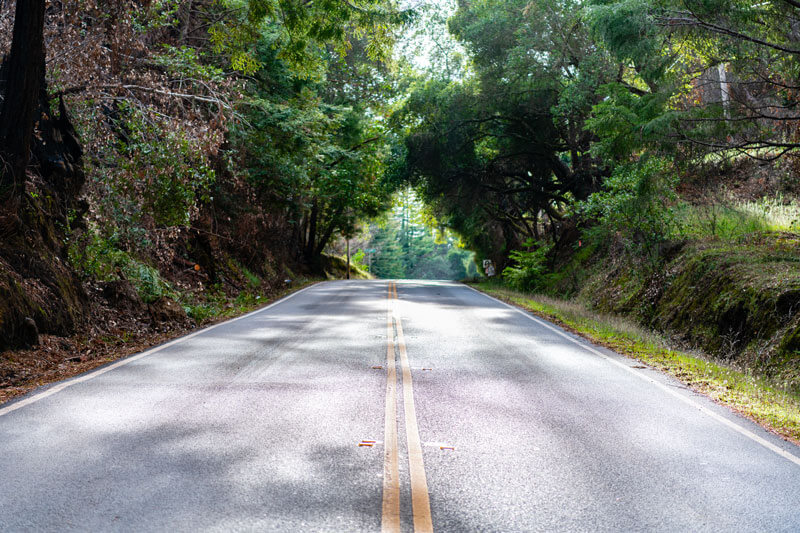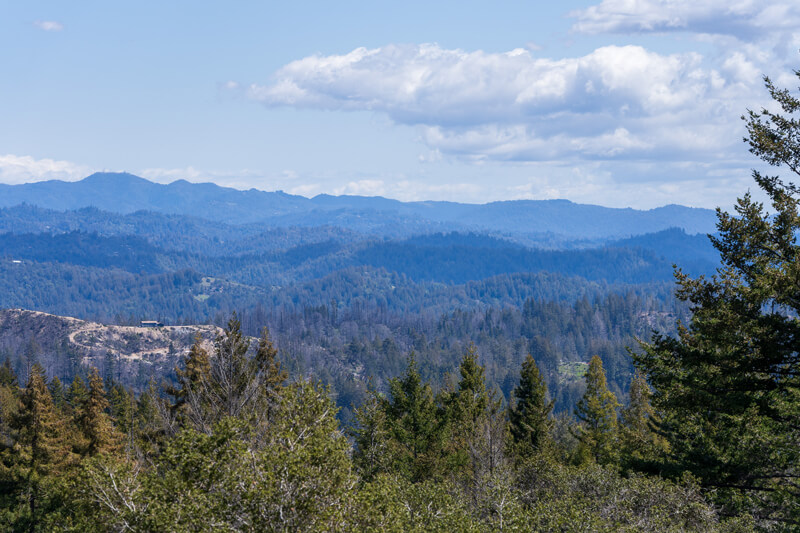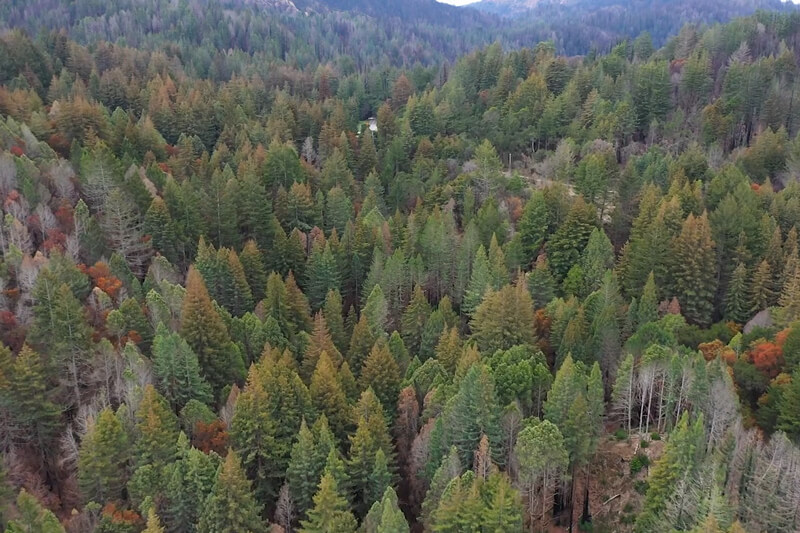photo by Orenda Randuch
Big Basin Redwoods State Park
Big Basin Redwoods State Park is California’s oldest state park, and its old-growth redwoods are among the oldest in the southern end of the species’ range. Protecting these ancient trees has been at the heart of the redwoods conservation movement since Sempervirens Fund was founded in 1900.
Thriving old-growth groves benefit from expanded conservation lands that support the watersheds and surrounding natural communities on which they both rely and themselves support. California State Parks has long envisioned moving visitor-serving facilities–especially buildings–out of the oldest groves to further protect the old-growth. After the CZU Fire in 2020 razed nearly all infrastructure in Big Basin Redwoods State Park, including its historic visitor center and buildings, California State Parks is Reimagining Big Basin.
A key feature of that plan is to expand the eastern edge of the park: the Saddle Mountain Conservation Area.
But much of the lands in this area–crucial to both Big Basin State Park and the region’s water– remain unprotected. Unprotected lands can weaken the health of the ecosystem, fragmenting how the area is managed, and hinder interconnected habitats and needs of forests and wildlife that extend beyond property lines and fences. Protecting high priority lands in Big Basin’s Saddle Mountain Conservation Area safeguard its forests, watershed, and the Park’s future.
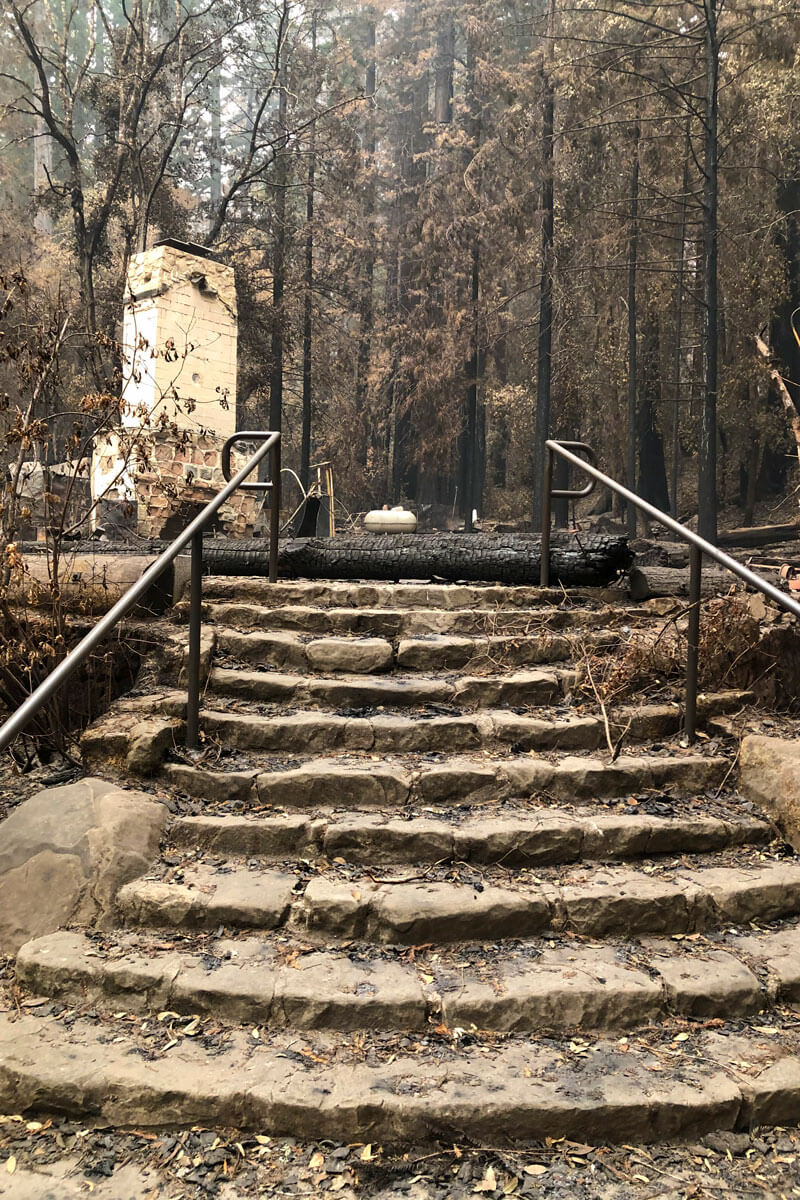
photo by Laura McLendon
Saddle Mountain Conservation Area and Reimagining Big Basin
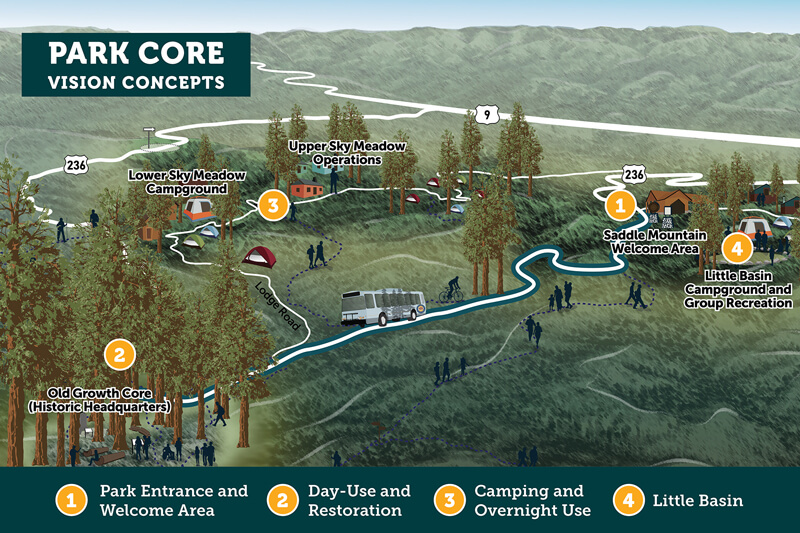
from California State Parks
Much land in the Saddle Mountain Conservation Area shows evidence of being clear-cut more than a century ago and the Boulder Creek Watershed it is located in has suffered more human impacts than most in the Santa Cruz mountains. In planning for the future of the park to better accommodate visitors and protect its old-growth redwood grove, California State Parks plans to relocate future visitor facilities to reduce impacts to the ancient and iconic giants.
The vision California State Parks released in their Facilities Management Plan situates future visitor centers in the Saddle Mountain Conservation area making the area and lands you and your fellow Sempervirens Fund supporters have protected there instrumental for the future of Big Basin.
Sempervirens Fund supporters helped create Big Basin Redwoods State Park, California’s first State Park, and have continued to protect land to expand the park’s protections of its incredible redwood forests, watershed, wildlife, and recreational opportunities for visitors around the world to connect with them. In 1999, Sempervirens Fund supporters protected the first piece of land in the Saddle Mountain Conservation Area, where Sempervirens Outdoor School operated for several years before it officially became part of Big Basin Redwoods State Park in the early 2000s. Today, Sempervirens Fund supporters continue to protect land in Big Basin’s Saddle Mountain Conservation Area including these recent lands which could be integral to the future of Big Basin Redwoods State Park.
Here are some of the key lands Sempervirens Fund supporters have preserved forever in the Saddle Mountain Conservation Area:
Gateway to Big Basin
The Gateway to Big Basin, preserved by Sempervirens Fund supporters in 2022, is instrumental in protecting and connecting the future of Big Basin. Big Basin, the road to Big Basin, and most recently the Gateway to Big Basin are all crucial pieces in a more than century long puzzle to connect protected land and secure the environmental future for its forests, waterways, wildlife, and recreational opportunities for generations to come.
Sterrenzee Ridgetop
In 2023 and 2024, Sempervirens Fund supporters protected three small but crucial properties named Sterrenzee, Dutch for “Sea of Stars,” for their spectacular views of the sky at night and by day its ridgetop offers stunning views of Big Basin and the Boulder Creek. Sterrenzee Ridgetop's 26.5 acres features second-growth redwoods and hardwoods, which were minimally affected by the 2020 CZU wildfire that swept through most of the park. It’s location is key for connecting protected lands–including Gateway to Big Basin, Big Basin, and East Ridge Trail–expanding wildlife habitat and corridors, and for Reimagining Big Basin State Park.
Saddle Mountain Vista
Saddle Mountain Vista’s 15 acres of second-growth redwoods and coast live oak overlook sweeping views of the San Lorenzo Valley. Straddling two watersheds, East Waddell Creek and Boulder Creek, Saddle Mountain Vista’s protection also protect stream biodiversity for nearby Big Basin and the region out to the sea. This inholding in the Saddle Mountain Conservation Area, key to the future of Big Basin Redwoods State Park, was protected by Sempervirens Fund supporters in 2023.
Sempervirens Fund supporters continue the legacy of supporters who first helped create Big Basin Redwoods State Park and continue to protect land to expand the park’s protection of natural resources and recreational opportunities for future generations to connect with them.
More to Explore
- Participate in Reimagining Big Basin
- Read More About Protecting Big Basin Redwoods State Park
- Visit Big Basin
